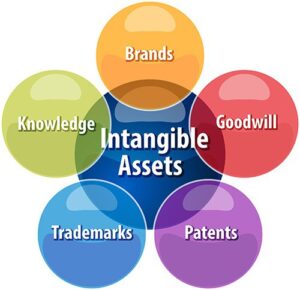![]()

Intangible Assets
Yes, assets can be intangible. In accounting and finance, assets can categorize into two main types: tangible assets and intangible assets.
Tangible assets refer to physical assets that possess a physical form and can be perceived through touch or sight. Examples of tangible assets include buildings, machinery, vehicles, inventory, and land.
On the other hand, intangible assets are assets that do not have a physical presence but hold value based on their intellectual or legal rights.
They lack a physical substance and cannot be touched. Some Examples are:
1.Intellectual property:
This includes patents, trademarks, copyrights, and trade secrets that provide exclusive rights to the owner for a specified period.
2.Goodwill:
Goodwill represents the value of a business beyond its tangible assets and arises fr
om factors such as reputation, customer relationships, and brand recognition.
3.Software:
Software developed for internal use or for sale can consider an intangible asset.
4.Customer lists:
Valuable databases or lists of customers and their contact information can consider it.
5.Licenses and permits:
Exclusive licenses or permits granted by regulatory bodies can have v
alue and be classified as intangible assets.
These Assets record on the balance sheet and are typically subject to specific accounting rules and guidelines for recognition, measurement and amortization. They can hold significant value f
or a company and are often critical to its competitive advantage and future earnings potential.
So, It’s worth noting that the valuation and accounting treatment of that can depends on specific regulations and accounting standards, such as International Financial Reporting Standards (IFRS) or Generally Accepted Accounting Principles (GAAP).

For further details access our website https://vibrantfinserv.com
To visit: https://www.mca.gov.in